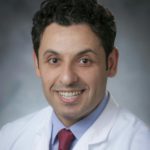Cardiology Beyond Single Imaging Modality
Cardiovascular (CV) imaging plays a crucial role in declining mortality and optimal disease management. Knowledge of various imaging modality is vital for understanding and management of patients of various CV diseases. Since the first A-mode echocardiogram, there have been great revolutional changes. However, the imaging principal is exactly the same. Echocardiogram and nuclear modality were the only clinically available imaging for management in patients with different CV diseases. The introduction of cardiac magnetic resonance (CMR), computer tomography (CT), three-dimensional (3D) printing, and strain echocardiography makes things quite different. Multi-modality imaging (MMI) plays a role in all CV diseases that includes ventricular function, coronary artery disease, valvular disease, congenital heart disease, intervention guidance, and vascular diseases.
In less than fifteen years, as a non-invasive imaging option, CMR has grown from a being a mere curiosity to becoming a widely used clinical tool for evaluating CV disease. CMR is now routinely used to study myocardial structure, cardiac function, macro vascular blood flow, myocardial perfusion, and myocardial viability. CMR provides a number of key tools to the clinician to evaluate cardiovascular pathologies. Among available imaging modalities to assess global and regional ventricular function, cine CMR based measurements are considered the ‘gold standard.’ While more involved than echocardiogram, CMR based phase contrast methods are robust in the evaluation of regurgitant volume and valvular function.
CT scan have been able to segment the heart better than Echocardiogram. Computers can combine these pictures to create a 3D model of the whole heart. This imaging test can help doctors detect or evaluate coronary heart disease, calcium buildup in the coronary arteries, problems with the aorta, problems with heart function and valves, and pericardial disease. This test may be also used to monitor the results of coronary artery bypass grafting or to follow up on abnormal findings from earlier chest x-rays. Different CT scanners are used for different purposes. A multidetector CT is a very fast type of CT scanner that can produce high-quality pictures of the beating heart and can detect calcium or blockages in the coronary arteries. An electron beam CT scanner can also show calcium in coronary arteries.
3D printing is a fabrication technique used to transform digital objects into physical models. Also known as additive manufacturing, the technique builds structures of arbitrary geometry by depositing material in successive layers based on a specific digital design. Several different methods exist to accomplish this type of fabrication and many have recently been used to create specific cardiac structural pathologies. While the use of 3D printing technology in cardiovascular medicine is still a relatively new development, advancement within this discipline is occurring at such a rapid rate that a contemporary review is warranted.
With rapid advances in imaging technology, current fellows in training and future consultants will frequently be required to use MMI in patient care. CV imaging is fundamentally about the information in the image, not how it is acquired. MMI has been the area of discussions for more than a decade, and the 2015 Core Cardiology Training Symposium guidelines published in May 2015 have further reinforced its importance. Nearly everyone agrees that MMI training is imperative, and most fellows in cardiology programs who are interested in careers in noninvasive imaging have expressed strong interest in acquiring such expertise and eagerly ask about its formal inception. However, despite all of the interest and goodwill, the practical implementation of MMI training has been slow.
Cardiac MMI is a highly dynamic field of continuing research driven by the constant technological advances and innovation of noninvasive imaging and the increasing clinical interest. Its impact extends beyond its clinical utility onto the organization of diagnostic healthcare structures. Furthermore, there is a belief that too much imaging is being done at significant cost and without strong evidence that this amount of imaging is needed or indeed improves outcomes. As part of U.S. healthcare reform efforts, physicians will be required to document that they are following appropriate use criteria (AUC) for outpatient medical imaging orders by using clinical decision support software documentation. The software must be certified by the Centers for Medicare and Medicaid Services in order to receive full reimbursement for diagnostic imaging services for Medicare and Medicaid patients. This will affect advanced outpatient imaging for CT, MRI and nuclear imaging. These new AUC are intended to provide guidance for clinicians when choosing among available testing modalities for various cardiac diseases.
In the assessment of CV disease, multiple imaging modalities may contribute toward determining the diagnosis, prognosis, and approach to treatment. However, each imaging modality may provide relevant information regarding more than one of these clinical needs. Therefore, to explore fully the potential impact of imaging, the strategy should be individualised according to the specific clinical needs and AUC.

Dr. Fawaz Abdulaziz M Alenezi is a Clinical Imaging Fellow at the Duke University Health Systems. He conducts medical research on the derivation and validation of novel echocardiographic approaches to myocardial deformation and a new echocardiographic technique which assists patients with heart ventricular function.